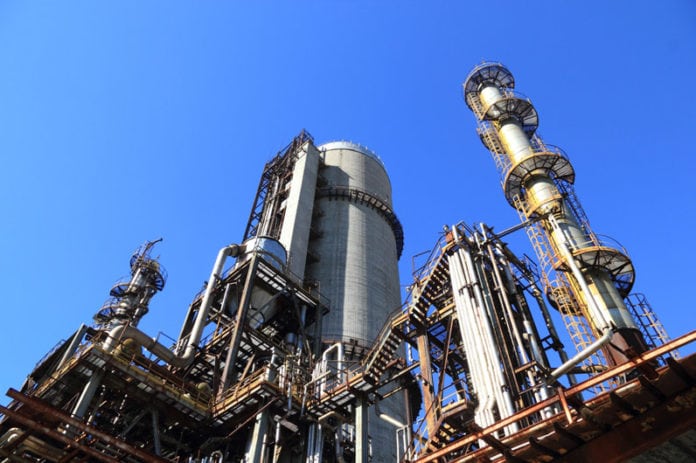Oil sands are composed mainly of sand, bitumen, and water.
Bitumen is heavy oil with high viscosity and density that doesn’t flow unless heated up.
This means it cannot be easily extracted as conventional oil where you can just drill a well and expect the oil to flow to the surface.
Because bitumen is much heavier than conventional oil it requires more processing to break down hydrocarbons into smaller molecules as well as to remove impurities like hydrogen sulfide.
The final product of bitumen upgrading is synthetic oil.
Even though extracting oil from oil sands is usually more expensive than from conventional reservoirs, improvements in technology are driving the costs down and making it more economical.
Some methods used to extract oil from oil sands are steam-assisted gravity drainage, cold heavy oil production with sand, cyclic steam stimulation and vapor extraction, and surface mining.
Related: What is Crude Oil Made Of?
Oil Sands Surface Mining
Surface mining of oil sands is only a viable option if oil sands are located at the surface or really close to the surface.
One of those areas is located in Alberta, Canada around the city of Fort McMurray.
One of the advantages of surface mining is that there is no need to drill any wells.
Unfortunately, surface mining can create quite a bit of damage to the landscape and require more time for reclamation.
The mining is performed by utilizing large trucks that load oil sand and transport it to facilities where it undergoes processing to separate the oil from sand by heating it up with water.
After that heavy oil undergoes more processing and in the end, it is converted into synthetic oil that can be transported via pipelines to the refineries.
The sand is usually sent back to the mines for reclamation purposes.
The water from this process including sand particles and salt is pumped into tailing ponds.
Most upgrading plants are built close to the bitumen extraction mines to decrease transportation costs.
Related: How is Crude Oil Transported?
Steam Assisted Gravity Drainage (SAGD)
This is an in-situ oil sand recovery method that involves drilling two wells just a few meters apart from each other.
One of the advantages of in-situ methods is that there is a very limited disturbance to the landscape.
The second advantage is that oil sands don’t need to be at the surface for this method to work.
One of the wells is used for steam injection and the other one is for oil production.
Hot steam is injected into the upper well to heat up the formation and allow heavy oil to flow down due to gravity into the second lower well that is used for production.
Cold Heavy Oil Production With Sand (CHOPS)
This method is similar to conventional horizontal well drilling operations with the only difference being that sand filters are not installed and sand is allowed to flow into the wellbore along with heavy oil.
Just drilling the well in an oil sand formation will result in extremely small oil recovery due to the high viscosity of the bitumen at low temperatures.
By allowing sand to flow, small pathways are created that allow more heavy oil to flow into the well.
On the surface, heavy oil is separated from the sand and sent for further upgrading.
Often artificial lift systems are used with CHOPS to improve production.
Related: Artificial Lift Methods Used to Get Oil to Surface
Cyclic Steam Stimulation (CSS)
This method is similar to SAGD but for CSS recovery only one well needs to be drilled.
After the well is drilled, steam is injected into the well for a long period of time to heat up the formation.
Both horizontal and deviated wells can be used for CSS.
After the steam injection is stopped, the well is put on production.
When production rates start to drop, the process is repeated until the well becomes uneconomical.
Vapor Extraction (VAPEX)
This method of extracting bitumen from oil sands requires drilling two wells one on top of the other similar to the SAGD method.
However, with the VAPEX method, various solvents, and liquid natural gas are injected into the upper well to dissolve bitumen mixed with sand in order to decrease its viscosity, allowing it to flow into the lower well.
Read next: What Is Enhanced Oil Recovery?
References:
https://en.wikipedia.org/wiki/Oil_sands
